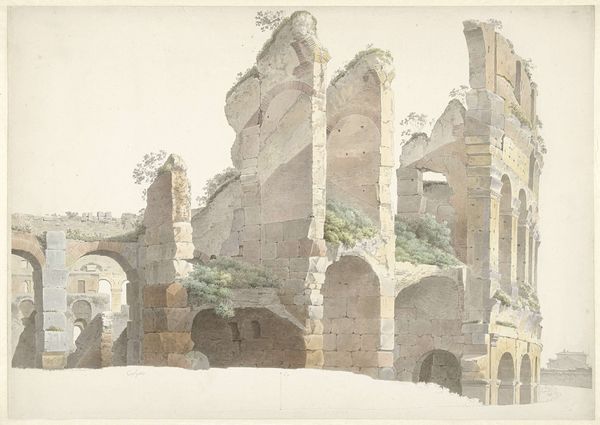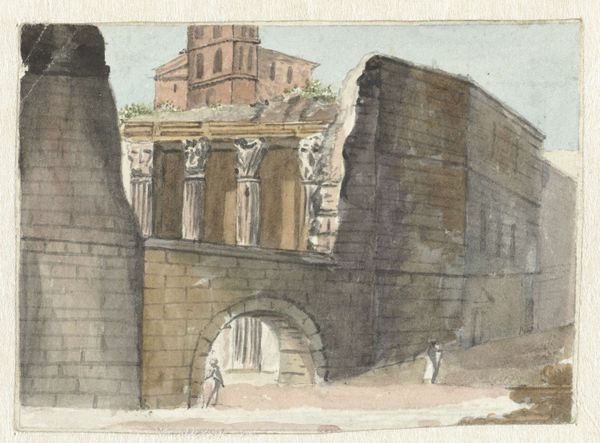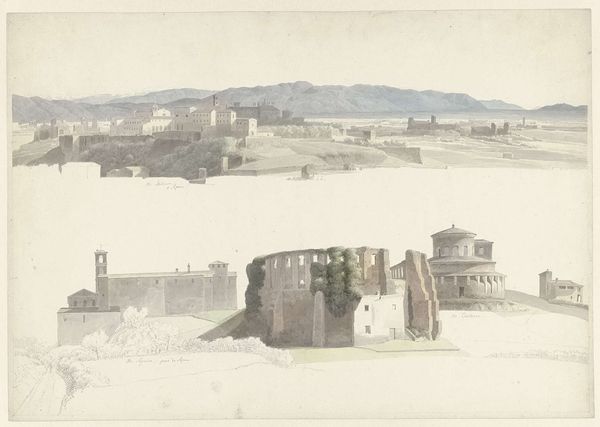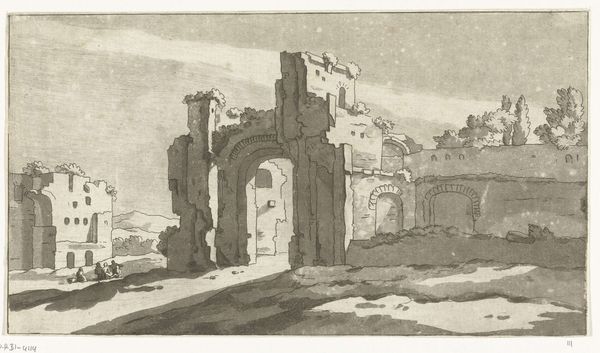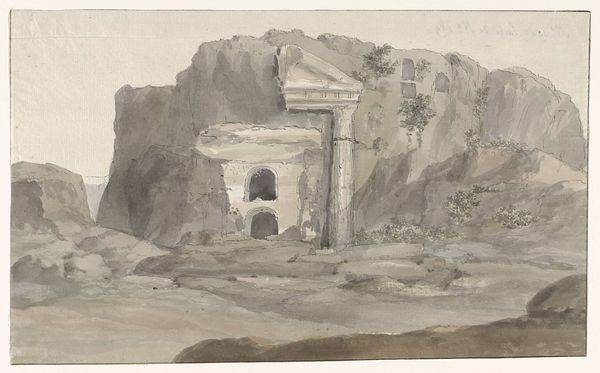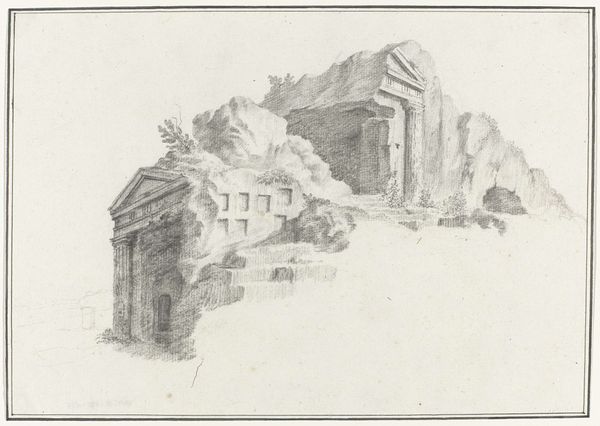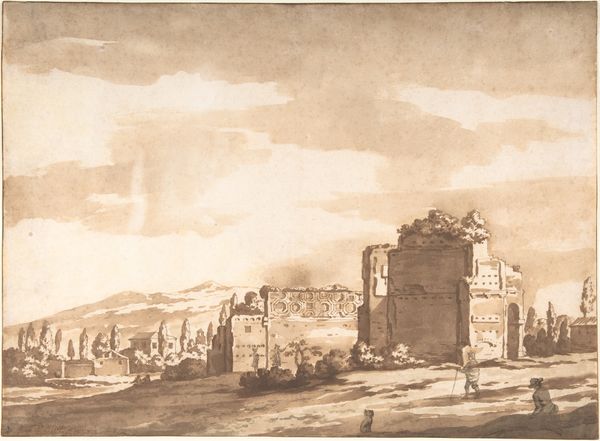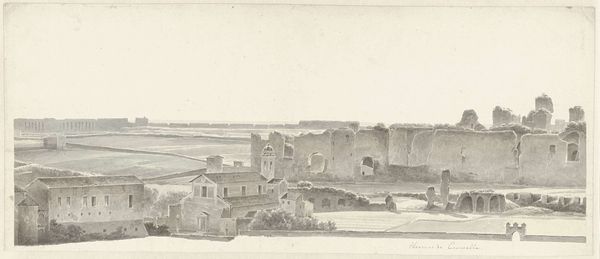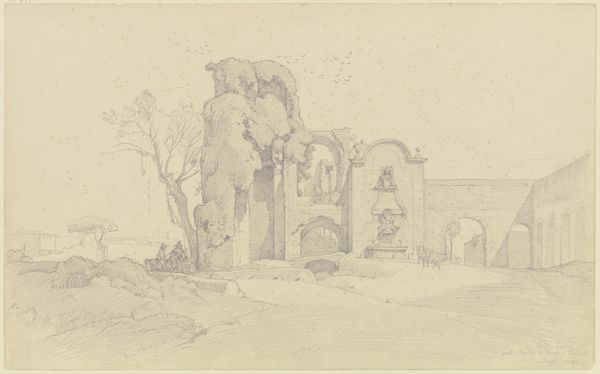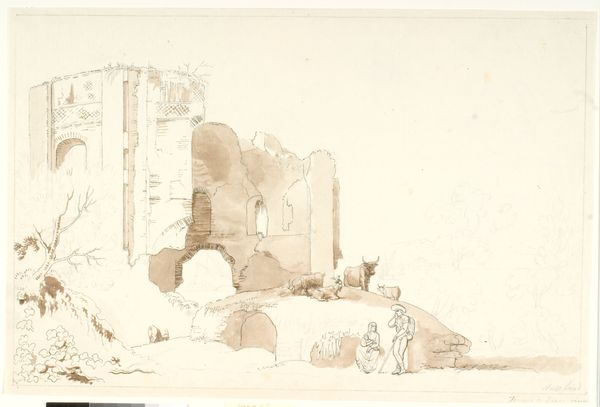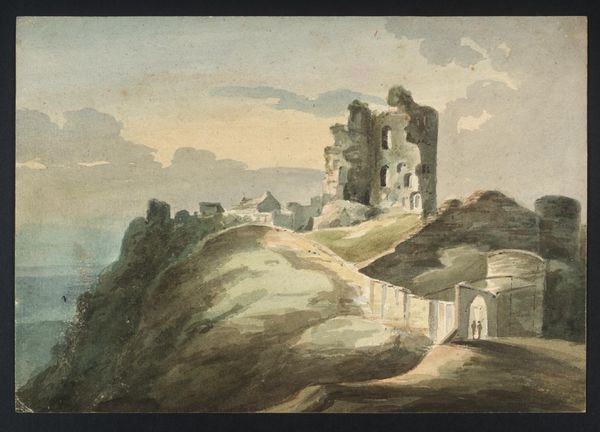
#
pencil drawn
#
amateur sketch
#
aged paper
#
toned paper
#
light pencil work
#
quirky sketch
#
pencil sketch
#
incomplete sketchy
#
quick sketch
#
watercolor
Dimensions: height 355 mm, width 498 mm
Copyright: Rijks Museum: Open Domain
Editor: This is "The Aqua Claudia in Rome," created by Josephus Augustus Knip around 1809 to 1812, it seems to be pencil and watercolor on paper. The scene is quite evocative, a grand ruin rendered with delicate strokes. How does this imagery engage with the cultural perception of Roman antiquities at the time, in your opinion? Curator: Well, here we see a romanticized, yet incomplete representation. Consider that in the early 19th century, the Roman aqueducts, like the Aqua Claudia, were potent symbols of both imperial power and its decay. Artists such as Knip played a crucial role in shaping the public’s perception of these monuments. But did they present them as engineering marvels or picturesque ruins? What does the state of preservation here suggest? Editor: I see the emphasis on the ruinous aspects, yes, the missing sections and weathered surfaces really stand out. Was there a political dimension to choosing to depict this decay? Curator: Absolutely. Depicting the Aqua Claudia in this way could be seen as a commentary on contemporary society, perhaps subtly critiquing the hubris of empire, its inevitable decline. Consider the power dynamics involved: European artists sketching Roman ruins were, in a way, claiming a visual ownership of the past. This imagery was circulated back home, reinforcing ideas of cultural inheritance, whilst maybe conveniently forgetting current socio-political disparities. What’s *not* shown is just as important as what is shown here. Editor: That’s fascinating. I hadn't considered the power dynamics inherent in even depicting ruins. It sounds like the act of creating this piece, as simple as it seems, speaks volumes about cultural perception and societal context. Thanks for helping me unpack this piece! Curator: It was my pleasure. These images open a portal into how art participates in historical conversations about authority, memory, and cultural identity, and that’s the story I see unfolding here.
Comments
rijksmuseum about 2 years ago
⋮
Scattered throughout the ancient city centre of Rome are the remains of the Aqua Claudia. Constructed in the 1st century AD, this aqueduct provided drinking water to large parts of the city. Knip drew the spot where the aqueduct is built over an old city gate not far from the basilica of Santi Giovanni e Paolo.
Join the conversation
Join millions of artists and users on Artera today and experience the ultimate creative platform.
